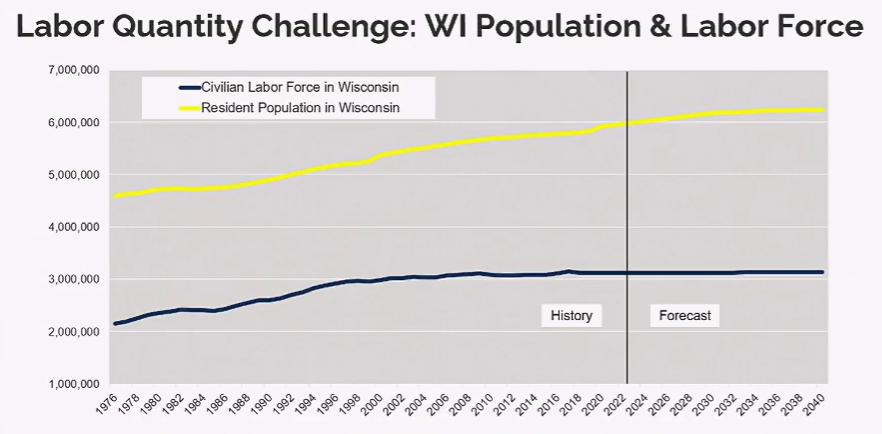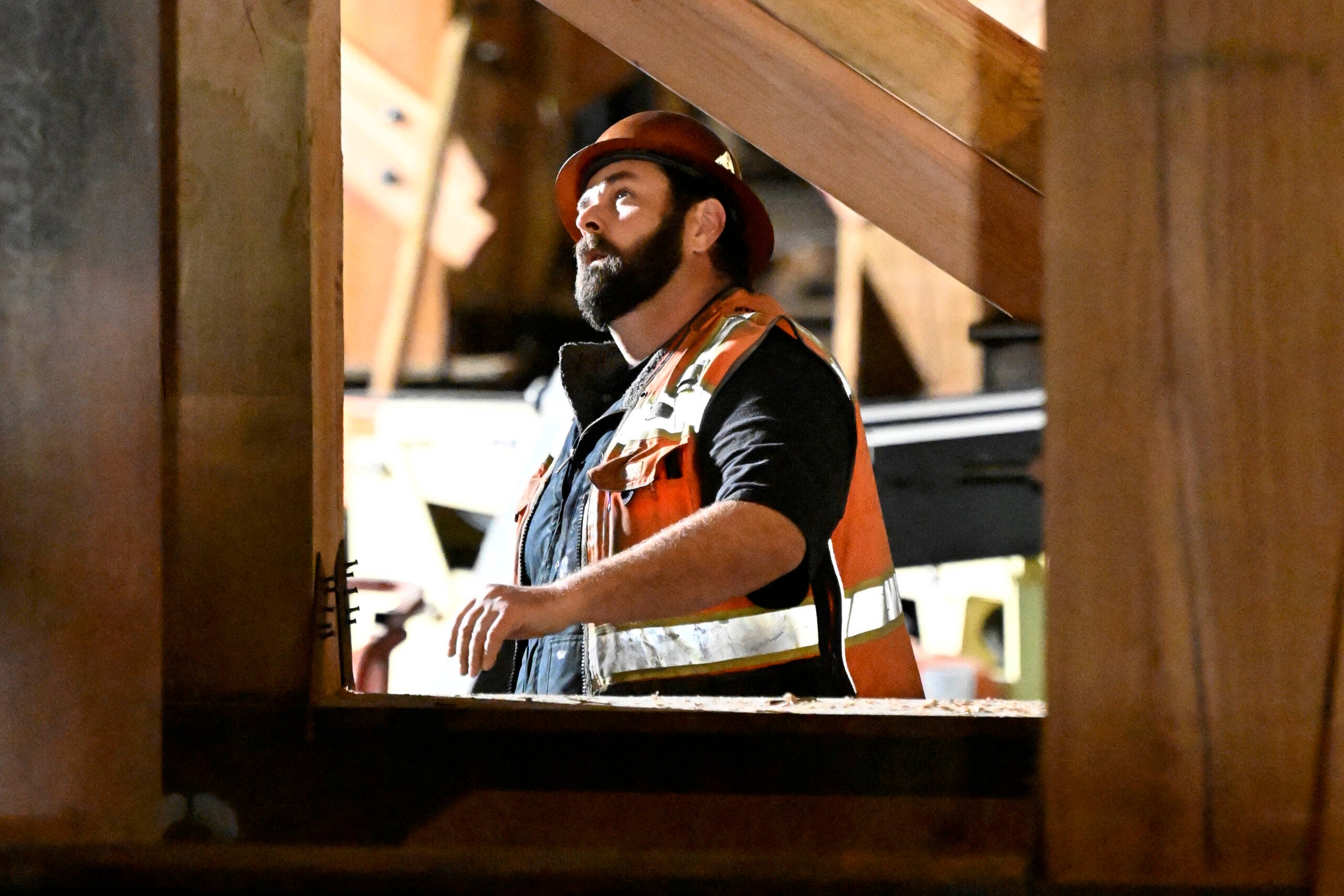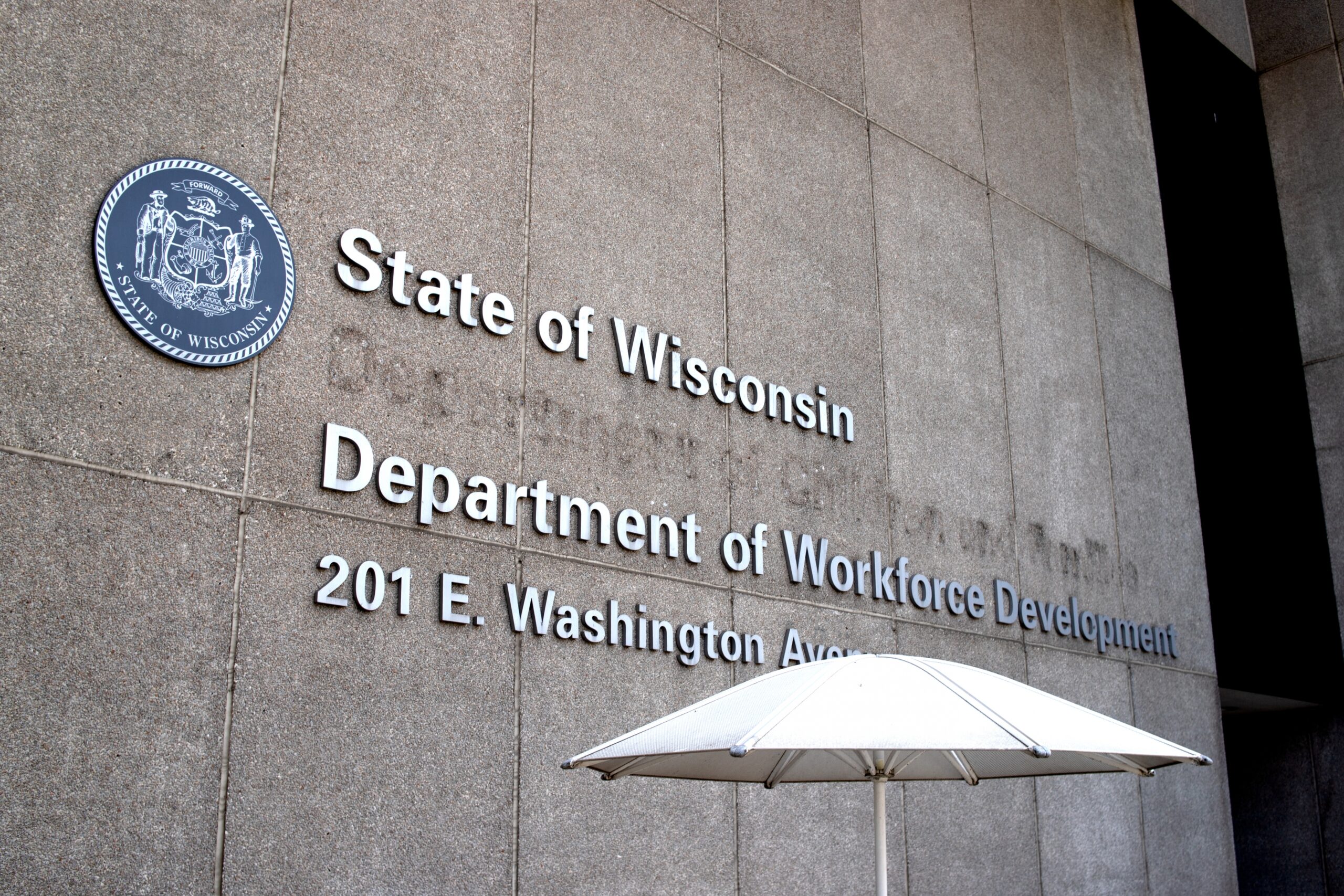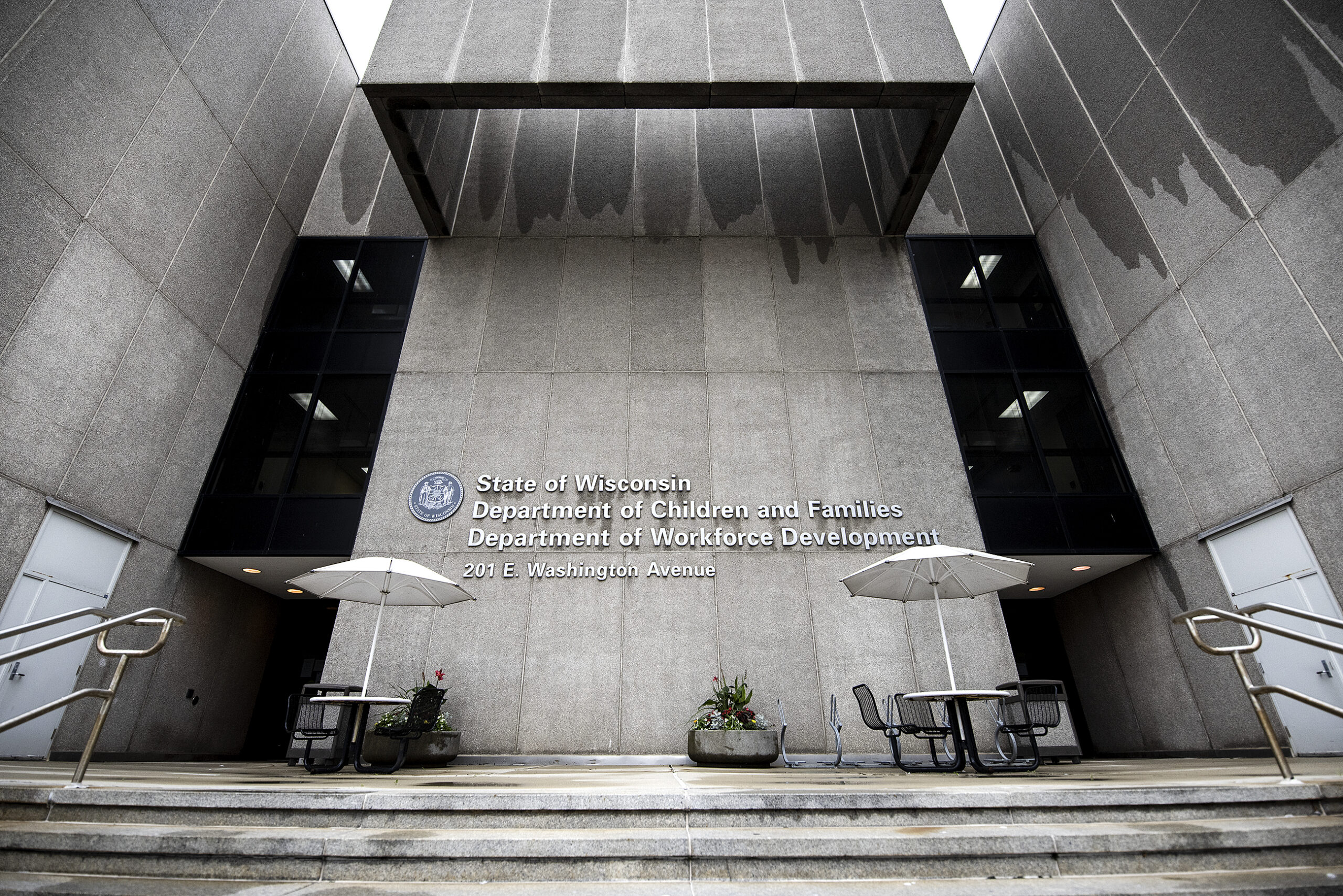The unemployment rate in Wisconsin dipped below 3 percent in April for the first time since mid-2023, according to data released Thursday by the state Department of Workforce Development.
Last month, Wisconsin’s unemployment rate declined to 2.9 percent, a full percentage point lower than the national rate.
The state also added 900 nonfarm jobs and its labor force participation rate remained at 65.6 percent, nearly 3 percentage points above the national rate.
News with a little more humanity
WPR’s “Wisconsin Today” newsletter keeps you connected to the state you love without feeling overwhelmed. No paywall. No agenda. No corporate filter.
“Historically, Wisconsin’s unemployment rate has been lower than the U.S. as a whole,” said Dennis Winters, chief economist for DWD. “Wisconsin is a hardworking state.”
The state’s unemployment rate remained very low since mid-2021, according to the Federal Reserve Bank of St. Louis.
Through most of the last half of 2022 and the first half of 2023, Wisconsin’s unemployment rate remained below 3 percent. Though still low compared to the past, it hovered between 3 and 3.4 percent between June 2023 and March 2024.
“If you are laid off, chances are you’re not going to be on unemployment long and you’d be able to find a job fairly quickly,” Winters said. “We’re in pretty good employment shape.”
Winters also said the state’s jobless numbers have remained low despite some high profile layoffs in 2024. As of Thursday, DWD had received around 50 layoff notices this year, affecting 4,314 workers.
Winters said the effects of those job cuts are felt locally, but they haven’t been enough to make a statistical impact on state unemployment.
“Out of 3 million jobs, even a couple thousand jobs are small compared to everything,” he said.
The health care and social assistance sector, according to DWD, added 1,300 jobs in April and 10,800 jobs over the last year, despite the closures of two hospitals and a network of clinics by Hospital Sisters Health System and Prevea Health this spring.
Nearly 1,400 employees across 21 locations lost jobs in the closures.
“The health care industry continues to grow, even with the layoffs we’ve seen in parts of the state,” Winters said. “We expect health care services and employment to continue to increase with the age demographics.”

While Wisconsin’s unemployment and workforce participation measures remain healthy, Winters said he was concerned about a “labor quantity challenge,” where the state’s labor force is growing slower than its population.
In fact, the state has had more job openings than job seekers since mid 2021, according to DWD data.
Winters said baby boomers’ retirements in recent years were one of the main causes for the slow workforce growth.
“That is affecting everything in the economy, (causing) big systemic changes through everything on the human resource side of things and the whole economic package as a whole,” he said.
Wisconsin’s nonfarm employment grew by 2.8 percent in 2022, 1.4 percent in 2023 and is expected to only grow by 0.7 percent in 2024, according to a February economic forecast report from the state Department of Revenue.
Between 2025 and 2027, total nonfarm employment in Wisconsin is expected to “remain flat,” the report said.
“Employment growth has been steadily slowing since 2022 for Wisconsin and the US,” the report said. “This trajectory is expected to continue and help bring the inflation rate persistently down to the 2 percent range.”
Wisconsin Public Radio, © Copyright 2025, Board of Regents of the University of Wisconsin System and Wisconsin Educational Communications Board.






